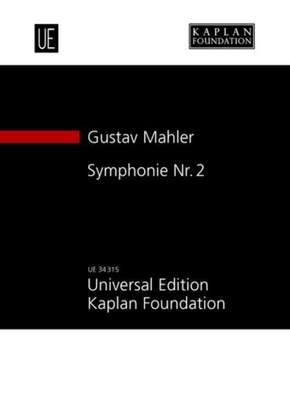Symphonie Nr. 2 - "Auferstehungssymphonie". für Soli, gemischten Chor (SATB) und Orchester. Studienpartitur.. Revidierte Neuausgabe nach dem Text der Neuen Kritischen Gesamtausgabe (2010) -
| Verlag | Universal Edition |
| Auflage | 2011 |
| Seiten | 330 |
| Format | 18 x 24,3 x 1,8 cm |
| Gewicht | 688 g |
| Reihe | Neue Studienpartituren-Reihe |
| ISBN-10 | 3702468080 |
| ISBN-13 | 9783702468088 |
| Bestell-Nr | 70246808A |
"corrigirt und Einzig Richtig befunden" (Gustav Mahler, September 1910)
Für viele Kenner stellt Mahlers 2. Sinfonie das zentrale Werk seines gesamten Schaffens dar. Ihr verdankt er Anfang des 20. Jh. die langersehnte Anerkennung als Komponist. Die Entstehungsgeschichte dieses Werkes reicht bis ins Jahr 1888 zurück und ist geprägt von zahlreichen Überarbeitungen durch Mahler selbst. Da die letzte Überarbeitung, datiert 1910, bei der Vorbereitung der Gustav Mahler Gesamtausgabe 1970 nicht vorlag, wurde eine Neuausgabe unbedingt notwendig. Nicht zuletzt auch aufgrund der 2002/03 entstandenen Einspielung der Wiener Philharmoniker unter Mahler-Spezialist Gilbert Kaplan, die den aktuellen Forschungsstand bereits berücksichtigt.
Die neue, kritische Ausgabe entsteht als Koproduktion der Universal Edition mit The Kaplan Foundation und erscheint im Rahmen der Kritischen Gesamtausgabe unter der Schirmherrschaft der Internationalen Gustav Mahler Gesellschaft.
Inhaltsverzeichnis:
1. Satz: Allegro maestoso. Mit durchaus ernstem und feierlichem Ausdruck · 2. Satz: Andante comodo. Sehr gemächlich. Nie eilen · 3. Satz: In ruhig fließender Bewegung · 4. Satz: Urlicht - Sehr feierlich aber schlicht. Nicht schleppen · 5. Satz: Im Tempo des Scherzos. Wild herausfahrend - Wieder zurückhaltend - Langsam. Misterioso
Klappentext:
Over the years, the need for a new edition of Mahler\'s Symphony No. 2 became apparent for several reasons. First, many new sources for this work have become accessible since 1970, when Erwin Ratz completed the first critical edition of this symphony, the most significant being Mahler\'s personal reference score in which he recorded changes to be made (his last entries were made in September 1910). The second reason was the significant strengthening of the editorial standards of the critical edition in recent years. The music is now computer-generated. Previously, changes to the score could be made only by retouching the film of old engravings. Computerization also ensures a concurrence between the score and performance materials. Editorially, the new edition benefits from expanded texts that describe and assess the source materials, document and explain the editors\' decisions and provide detailed information on the work\'s origin, the history of the published scores, performance practices, etc. Over the past five years, Renare Stark-Voit and Gilbert Kaplan, editors of the new edition of Symphony No. 2, have identified, evaluated and analyzed every significant source, and as a result of their work a substantial number of errors has been corrected.Instrumentation:for soli, mixed choir (SATB) and orchestra


